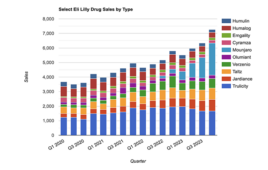
The global spread of chikungunya and dengue have been mapped in a new study, which also identifies the countries where co-infection in the same patient has been reported, and the countries at risk from future disease outbreaks. The research, published in BMC Infectious Diseases, highlights that problems with misdiagnosis of chikungunya mean it is likely that the true public health impact of the virus is being underestimated.
The maps, which were developed by researchers including Dr Laith Yakob from the London School of Hygiene & Tropical Medicine, also show the global distribution of the Aedes aegypti and Aedes albopictus mosquitoes responsible for transmitting the viruses, revealing which countries are at risk of infection in future.
This study is the first systematic review of literature on dengue-chikungunya co-infection in the same patient, and additionally used data from the World Health Organization, Centers for Disease Control and Prevention and Healthmap to create the new global maps on the disease distribution.
Chikungunya is rapidly spreading across the globe, partly due to increased opportunities for disease and vector spread caused by globalisation. The disease appears to have established in the Americas and the Caribbean, after the first cases of local transmission were reported in the region in 2013. However, the researchers believe that our understanding of the true extent of the disease, and of co-infection with chikungunya and dengue virus, is being hampered by misdiagnosis.
Chikungunya infection is often misdiagnosed as dengue fever due to their similar symptoms, including headache, rash, and muscle and joint pain. There is no specific vaccine or medicine for either illness, and treatment primarily involves alleviating symptoms. Misdiagnosis can affect how the symptoms of each disease are treated, with potentially serious consequences for the patient. Complications associated with chikungunya include debilitating joint pain that in some cases can persist for several months or even years, while dengue can occasionally develop into a lethal complication called severe dengue (also known as Dengue Haemorrhagic Fever). Both diseases can contribute to the cause of death in older people.
Dr Yakob, Lecturer in Disease Vector Biology at the School and senior author of the study, said: “The symptoms of dengue and chikungunya infections are similar and diagnoses are typically only symptom-based. During dengue fever outbreaks, or in countries that historically suffer dengue epidemics, clinicians do not tend to confirm their diagnosis in the laboratory; dengue infection is assumed. Co-infection is typically only detected during recognised chikungunya outbreaks and this reflects a widespread bias in how these diseases are reported.
“Our new maps demonstrate widespread co-distribution and co-infection with dengue and chikungunya: we must make sure that lab-based diagnosis becomes a priority in areas which are co-endemic, so that patients can be given the correct treatment. Ultimately, more effective and inexpensive diagnostics tests are urgently needed.”
More than half of the world’s population lives in areas at risk of dengue infection. The study authors identified a total of 154 countries that reported dengue and 99 countries that reported chikungunya. They found evidence for co-infection with both viruses in patients in 13 countries out of the 98 countries where both dengue and chikungunya transmission have been reported.
The researchers also investigated the distribution of the mosquito disease vectors. They found that Aedes aegypti, the mosquito which is the main vector for both dengue and chikungunya – and is also thought to be the main vector in the current Zika outbreak – is endemic to 174 countries around the world. Aedes albopictus, which can also transmit the viruses, is endemic to 88 countries. 68 countries have both types of mosquitoes. Dr Yakob said: “The vector species that spread these pathogens – and also the Zika virus – are the same, yet the number of countries that have reported dengue cases is considerably higher than countries that have reported chikungunya, which may be a result of misdiagnosis. “It’s important to note that the Aedes albopictus mosquito is better adapted to more temperate climes, which means that these viruses could potentially extend into more areas of the world. For example, our maps show that A. albopictus is found further north in the USA, Europe and China than A. aegypti mosquitoes.”
The researchers hope that the information in their study could help improve the diagnosis and treatment of dengue and chikingunya in countries where both viruses are present. They believe clear protocols are urgently needed for realistic and effective surveillance and control procedures, including a consolidated and continuously maintained global database of chikungunya case notifications (similar to the global compendium of dengue), linked with reports of vector species detection. Making the disease nationally notifiable would require outbreaks to be reported to authorities in countries at risk of transmission, as is already the case for dengue but not chikungunya in some countries, like Australia.
As has previously been undertaken for dengue, developing early warning systems for chikungunya and dengue-chikungunya co-infection could further understanding of both diseases. The authors note that further research is needed to determine whether infection with one virus makes a host more or less susceptible to infection with the other, or if co-infection exacerbates disease symptoms, which could not be confirmed in this study.
Source: LSTMH
Filed Under: Drug Discovery




